#Arch of Hadrian
Explore tagged Tumblr posts
Text

Arch of Hadrian in Athens, Greece (c.131-134 A.D.)
#athens#greece#architecture#ancient greece#arch#triumphal arch#ancient ruins#ruins#corinthian column#attica#arch of hadrian#original photography#europe#ancient monument#ancient monuments#art history#gateway#structure#ancient structures
173 notes
·
View notes
Text
Hills, History and Hidden Beauty - 2 Nights in Athens
I am back from 2 glorious weeks in Greece with the husband. Despite not being my first holiday, this is the first time I truly feel like I have had some proper downtime. We saw the sights, ate delicious food and spent some much-needed time together just relaxing. I still spent time writing and I found that having a clear headspace allowed for lots of inspiration, so over the next few weeks,…

View On WordPress
#Adventure#Ancient Greece#Aperol Spritz#Arch of Hadrian#Athens#Explore#Greece#History#Holiday#Liondi#National Gardens#Panathenaic Stadium#Parthenon#Temple of Olympian Zeus#The Acropolis#travel#Trip#Trip Advisor#Urban Frame Hotel#Vacation#Visit Athens#Xenios Zeus
0 notes
Text
Ahahahahaaaa the way I'm reading this fantasy book and there was this big reveal type thing gonna happen I was so delighted for guessing it correctly( no I didn't) like "𝘰𝘩 𝘩𝘦'𝘴 𝘵𝘩𝘦 𝘩𝘦𝘪𝘳, 𝘩𝘦'𝘴 𝘵𝘩𝘦 𝘩𝘦𝘪𝘳, 𝘺𝘦𝘴, 𝘩𝘦'𝘴 𝘵𝘩𝘦 𝘰𝘯𝘦 𝘰𝘰𝘩" Well turned out I was ignoring the obvious answer ( I hope, I'm still not fully sure lol)
But what I'm trying to say is, in general I tend to avoid books with hidden heir or smth like that. Feels kinda cheap and all that, but the moment I found a good book and good character most importantly and thought he might be the hidden heir, I started cheering for him. Human mind is weird man. Well, I'm glad the author didn't go with that( I hope so) but it was still like someone burst the balloon I was waving around lol.
#Btw thw book I'm reading is#Theft of swords#riyria revelations#Nd the character I was cheering for was#royce melborn#I love him mann#And I'd be glad if he isn't hidden heir lol#Cause as I said I avoid those kinda book#But I'd love him even if he was#Also#As this is my first post#(Who knows why)#hadrian blackwater#I love you sm#And#arista#And her brother#Alric#And Pickering brothers#Maaannnn I love all of themm#And fick you Saulder and arch bishop#Hope y'all die#Hope that rufus “im gonna be emperor” dies as well#michael j sullivan#The writer you are!#Bookblr#fantasy books#fantasy#books#currently reading
3 notes
·
View notes
Text
A Pilgrimage to Delphi
Sketches in Athens: Poseidon Hadrian’s Arch Hadrian’s Arch Hadrian’s Arch Temple of Hephaestus Holy Buildings Jupiter’s Temple and Acropolis A column Mosque and Acropolis at Dusk And now Delphi: Temple of Apollo Tholos seen from above the Temple of Apollo The precipice at Delphi The Tholos The Temple of Jupiter seen through the Tholos A last view of the Tholos

View On WordPress
2 notes
·
View notes
Text

4 notes
·
View notes
Text

I had an little vacation in Athens last week.
Hadrians Arch.
0 notes
Text
Jews are indigenous to Israel. Period.
Today is a good day to remind the Islamists and their supporters that Jews are from Judea (Israel) and the Islamists are the invaders and occupiers, not the other way around.
In 70 CE, Romans destroyed the Jewish temple and attempted to banish the Jews from Jerusalem. Simply because the Jews would not go silently into the night, dared fight back, and attempted to thwart the most technologically advanced army the world knew at that time.
We Jews commemorate this Roman invasion and colonization, by observing the Tisha B'Av annual fast.
This proof of Jewish indigeneity is literally carved in archaeological artifacts and in this case, carved in stone, depicted the Frieze on the Arch of Titus in Rome. This arch depicts Roman soldiers carrying the relics and loot, stolen from the Jewish temple. Look at the Menorah. Jews still use the same candlesticks and symbols.
So what is "Palestine"? Roman Emperor Hadrian renamed the land (Judea) to "Palestine", to attempt erasure of any connection with the Jews.
Muslim identity and religion was created more than 500 years later (in 600 CE). And Muslims started calling themselves "Palestinians" only much much later.
There is absolutely no way to twist history so that Palestinians appear before Jews. But it doesn't stop some people from trying...
Does indigeneity matter? Do Native Americans deserve their own land, or that might makes right, and European colonizers should be allowed to displace them? Native Americans have 56.2 million acres of land, governed by Native American Tribal nations that own them. This colored to about 4.8 million acres of land administered by Israel.
If you do not believe that indigeneity matters, if you believe who co where'd last is what counts, then guess what? We still arrive at the same place.

#israel#secular-jew#jewish#judaism#israeli#jerusalem#diaspora#secular jew#secularjew#islam#tisha b'av#indigenous#indigeneity#judea#Samaria#jexit#never again#no ceasefire#walkaway#hamas#gaza#antisemitism#islamism#islamic jihad#hamas is isis
243 notes
·
View notes
Text

Rome’s Ancient Arch of Constantine Struck by Lightening
During a storm on September 3, lightning struck Rome’s Arch of Constantine, chipping the structure’s marble surface. The 1,700-year-old arch and its neighbor, the Colosseum, were two of several sites affected by the thunderstorm, which produced 2.36 inches of rain in less than an hour. Usually, the city sees a similar amount over the entire month of September.
“A lightning strike hit the arch right here and then hit the corner,” a tourist at the site told Reuters’ Alberto Lingria. “We saw this fly off,” the tourist added while pointing to a fallen block of stone.
Finished in 315 C.E., the Arch of Constantine is one of Rome’s three surviving ancient triumphal arches, each erected to honor a person or event. This arch commemorates Constantine I’s 312 victory over the emperor Maxentius. That same year, Constantine devoted himself to Christianity—the first Roman ruler to do so.
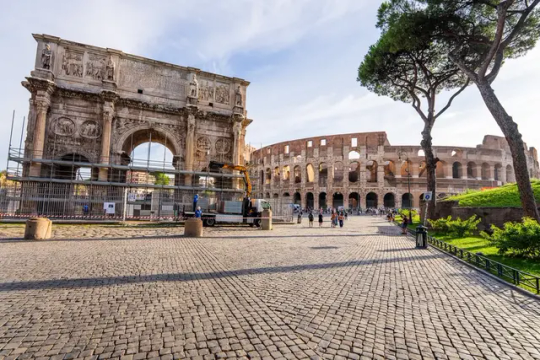
The fierce storm also felled two large trees near the Circus Maximus, flooded the Trevi Fountain and flooded the Colosseum’s subterranean tunnels, reports CNN. After lightning struck the arch, staff of the Colosseum Archaeological Park quickly gathered its dislodged pieces and placed them in a secure location, according to a statement from Italy’s Ministry of Culture.
In the days that followed, some tourists stumbled upon additional pieces on the ground.
“My American group found these fragments, and we’re handing them over to the workmen,” tour guide Serena Giuliani told the London Times’ Tom Kington on the morning of September 4.
Specialists are now examining the condition of the fragments. Officials say the damage was limited to the monument’s southern side, where unrelated restoration work had started just days earlier, allowing for quick repairs.
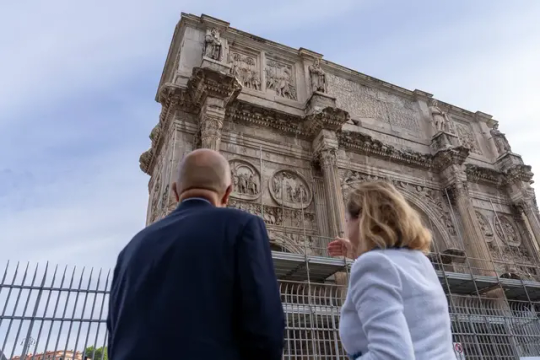

At roughly 70 feet tall and 85 feet wide, the Arch of Constantine contains three separate arches, each framed by columns. The intricately decorated structure is adorned with recycled fragments, or spolia, taken from other ancient buildings, including monuments honoring Trajan, Hadrian and Marcus Aurelius.
The arch is also decorated with carvings of Constantine, including a series of reliefs depicting his victorious fight against Maxentius in the Battle of the Milvian Bridge.
In 306, Constantine was leading Roman troops in Britain—then part of the Roman Empire—when his military declared him their emperor. His brother-in-law, Maxentius, also declared himself the emperor around the same time. After years of complex power struggles, the two rulers ultimately faced off in 312 at Rome’s Milvian Bridge, which overlooks the river Tiber. Panels on the Arch of Constantine depict the battle’s conclusion, showing Maxentius’ troops drowning in the river.
The arch’s recent encounter with lightning may have carried spiritual significance for its ancient builders, as “the bolts were believed to be the work of the gods,” per the Times. These spots were sacred for the Romans, who sometimes erected temples at such sites.
By Sonja Anderson.

#Rome’s Ancient Arch of Constantine Struck by Lightening#Rome’s Arch of Constantine#emperor Maxentius#emperor constantine#ancient artifacts#archeology#archeolgst#history#history news#ancient history#ancient culture#ancient civilizations#ancient rome#roman history#roman empire#roman art#ancient art#art history
207 notes
·
View notes
Text
A Few More Roman Art Vocabulary

for your next poem/story
Patricians: Romans from noble families.
Plebeians: The mass of Romans who were not members of noble families.
Pontifex maximus: The chief priest of Rome. During the empire, the emperor was the pontifex maximus (today it is the term applied to the Catholic pope).
Pozzolana: A type of volcanic earth. When mixed with water, it set hard and was not water-soluble. It was mixed with aggregate to make Roman concrete.
Princeps: First citizen. A title adopted by the first emperor, Augustus, when he established his sole rule, as a means of suggesting that he was simply the first among equals and ruled in concert with the Senate. In truth, he was the sole ruler.
Sarcophagus: A coffin for a dead body, usually made of stone. When inhumation became popular in Rome during the second century A.D., sarcophagus production became a major industry in the Roman world.
Senate: The legislative body of the Roman Republic; it lacked real power in the imperial era.
Stadium: Track for chariot racing, elongated with one curved end.
Strigil: A curved piece of metal used for scraping the body clean after bathing or exercising.
Tessera: One of the cubes of glass or stone that were combined together to make a mosaic.
Tetrarchy: A system of rule in the later Roman empire in which four rulers each governed a geographic section of the Roman world.
Toga: The principal article of clothing for a Roman male citizen. It was a semicircular piece of cloth that could be put on only with the assistance of attendants.
Triclinium: The dining room of a Roman house.
Tumulus: A type of round burial mound used by the Etruscans, later adopted on a gigantic scale by the emperors Augustus and Hadrian for their tombs.
Vault: A ceiling constructed by using the principle of the arch and extending it.
Veristic style: The realistic portrait style of the Republic.
Villa: A luxury home outside the city.
Source ⚜ More: Word Lists ⚜ Part 2
#roman art#terminology#word list#writing inspiration#writeblr#dark academia#writing reference#spilled ink#creative writing#light academia#literature#writers on tumblr#poets on tumblr#writing prompt#poetry#writing resources
66 notes
·
View notes
Text




Hadrian's Gate, Altaya, also called "The Three Gates" is a triumphal arch built in the name of Hadrian, the traveling emperor, who visited Antalya in 130 AD.
#photography#art#culture#naturephotography#landscapephotography#wildlifephotography#ancient buildings#ancient cultures#museum
353 notes
·
View notes
Text
Fiz bandeira de um velho ditado
Alessa stares out into a deep, red sunset. Clouds shred the skies in strokes of gold, and a band of pigeons flies overhead, the sound of their wings flapping like the whispers of forbidden gods.
She can hear the murmur of a dozen voices behind her, muffled by the walls of the brightly-lit inn but no less boisterous.
Ahead, there's a view fit for a painting. Alessa inhales the fresh air, blue eyes watching the last light of a dying day. She is used to being cold, but Alessa finds herself shivering at the approaching night. 'Tis a beautiful view.
And she has none to share it with.
Melhor só que mal acompanhado
One hand grips a patched satchel.
The other holds the only possession Harian could take with him. His black sword. He's panting, sweat drips from his forehead, and the blood pounding against his eardrums yells at him to keep going. But when Hadrian reaches the apex of the hill, he comes to a stunned stop.
The land opens before him.
Behind, too close, so far away, are the high walls of his Order. Hadrian almost looks back; he almost goes back. Instead, he makes his legs take another step. And then another. And one other after that. For the first time in his life, Hadrian walks alone.
Nem pensava em apoiar, Os pés no chão
She crawls out from the ashes, lungs burning, eyes watering, throat like the hottest pit of hell. Her skin is red agony, her muscles shredded, her tendons torn, her heart beating out of pure spite.
Neia, the former Dawnseeker, takes a deep, ragged, pain-filled breath. And then, she screams.
A dark cloud of crows scatters away from her.
A specter rises to her feet, scorched, blood too dry to bleed, yelling still. When Neia has no more air left in the pitiful excuse for her lungs, she looks at her grave — the charred remains of a holy pyre. There is no one else.
She's reborn alone.
Olho em volta, Agora estou sozinho
The ocean is a flat, moving plain, stretching to impossible horizons.
A dozen, two scores, half a hundred vessels surround him like a curved wall. The Pirate stands at the bow of his ship, the figurehead braving the waters, nine fingers holding the damp-wooden railing. Lights shine from a hundred different windows, replicating the cold glow of the millions of stars above.
The ocean breeze is calm. He inhales the salt-filled air.
His armada.
The Pirate smiles, but his dark eyes do not glint. His armada, and his alone.
Não liguei às placas do caminho
On the top floor of a high, impossible tower, two windows sit on opposite ends. One faces south, the other north. There is no corridor connecting the two, no hidden passage, no hall or arched hallway. The rooms are sealed in the impregnable way only dreamed rooms can ever be.
In the room facing north sits a young, brown-eyed girl with curls for hair and a beautiful golden gown for clothes. Ysbaella sits with her skirts spread around her and stares out her window, watching the world below move and go on and on and on.
In the south-facing room, a young boy twirls a broken quill between too-short fingers. He sits by the window, but he doesn't look outside. He stares instead at an empty journal. Alain can't find any ink to write.
The twins wait for dawn, for the dream to be over. Each of them alone.
Nem parei p'ra perguntar a direção
The door closes with a thud that spells finality.
Rafael slumps on his chair. His body is a distant thing now, beyond the grip of pain. Exhaustion closes in, and Rafael wants to heed its siren call, for it would be so easy. Close your eyes. Close his eyes and let go. Let go...
Distantly, he feels an ache on his side. It's not pain; he can't feel pain right now. Rafael looks down and sees the red expanding on his wraps. Blood. He was stabbed. His eyelids half-close. It would be so easy...
But Rafael twists his lips in a hateful sneer and clings to consciousness. Clings to life. To hell with them all. He's lived so far; he can cling on a little more.
The would-be thief looks around the room — his cell. Dark and cold.
And completely deserted.
Olá, Solidão
You raise your chin and face the mirror.
Candlelight glows from behind, casting your silhouette in warm golden lines. Shadows play with your chin and jaw, your forehead, and the ridge of your nose. Your hair is wet, clinging to your neck, and your mouth is but a faint streak in the gloom.
The whites of your eyes glint with the scarce glow as if they hold a light of their own.
You stare at the mirror, but it's not your face you see.
It is hers.
Olá, Solidão
The bard puts the lyre aside, the last remnants of the song echoing like ghosts in the air.
Lance unfolds his legs and rolls his shoulders, getting rid of the soreness of his muscles. His left hand is cramping, but he pays it little mind. The pain pales in comparison to the one pulsing from his back.
He is proud of this song, but there is no applause.
Lance looks around the small, narrow room with a sad smile. It is empty, of course. He plays for an audience of one: himself.
- - -
Song: Olã, Solidão by Os Quatro e Meia
222 notes
·
View notes
Text





I’m more or less on hiatus due to lack of time and inspiration (probably the main reason 😅), but I’m still sketching along from time to time.
Some sketches from my trip to Greece — I’ve visited as much as I could squeeze into 6 days, but I’ll definitely be back for more sometime soon.
(yes, it’s the Arch of Hadrian, but only the top part 😝 I had no time for the rest)
#sketchbook#greece#athens#alexander the great#travel sketches#i took pictures of probably every single cat in athens…
13 notes
·
View notes
Text

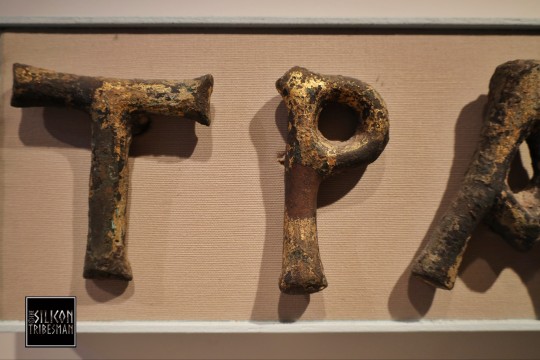
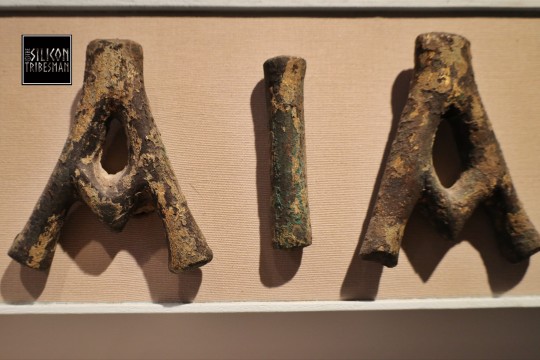
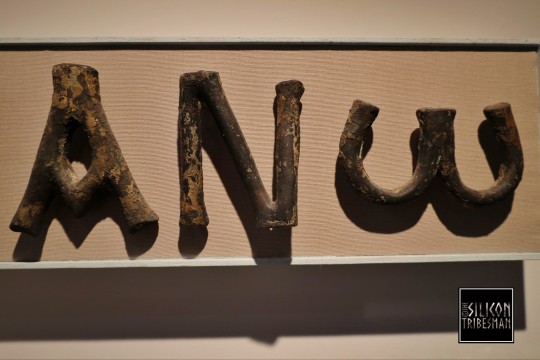
Hadrian, son of Trajan
Gilded bronze letters from the gate of the emperor Hadrian at Antalya, south-west Turkey. Roman, 130 CE.
The gate, designed to look like a triumphal arch and still standing in the modern city, was built to mark the visit of the much-travelled emperor Hadrian (ruled 117-138 CE). The letters spell 'Traiano' in Greek, the language of the eastern Roman empire. This was part of Hadrian's name, marking him out as the adopted son and heir of the preceding emperor Trajan.
Ashmolean Museum, Oxford
#roman#romans#roman emperors#roman army#roman empire#archaeology#lettering#greek#arch#ancient craft#ancient cultures#ancient living#Ashmolean#title#statement
44 notes
·
View notes
Text

Baalbek temples under fire : Temple of Jupiter and Bacchus.
The Israeli occupation army randomly bombs the city's civilians buildings near the archaeological sites in Lebanon ( Tyre Hadrian arch and balbaak castle) Baalbek, located in Lebanon's Bekaa Valley, is an ancient archaeological site originally known as Heliopolis. It has a rich history dating back to the 3rd millennium BC with Phoenician origins. The site flourished under Roman rule from 64 BCE, becoming a center of worship and commerce. Notable structures include the Temple of Jupiter, the largest Roman temple, and the well-preserved Temple of Bacchus. The temples were later converted into churches during the Christianization of the Roman Empire and into a fortress by Arab conquerors. Designated a UNESCO World Heritage site in 1984, Baalbek remains a testament to its layered historical and cultural legacy.
#Temple_of_Jupiter #Phoenician #Temple_of_Bacchus #lebanon_under_fire #UNESCO #Baalbek #jupiter #liban #maritimephénicien #phéniciens #site #temple #terrestre #toulouse #tripoli #Lebanesearchaeology #tyrelebanon #sidonlebanon #discoverlebanon
#sidon #saida #tyre #Beirut #Phoenician #الصديق_الصدوق
#history#archaeology#photography#culture#greek coins#travel#palestrina#roman coins#sidon saida tyre beirut phoenician الصديق_الصدوق#الصديق_الصدوق#archeology photography lebanon beirut#lebanon#balbaak#Temple_of_Jupiter
7 notes
·
View notes
Text

You know for someone who's interested in classical architecture, I never really bothered to learn how to draw it huh
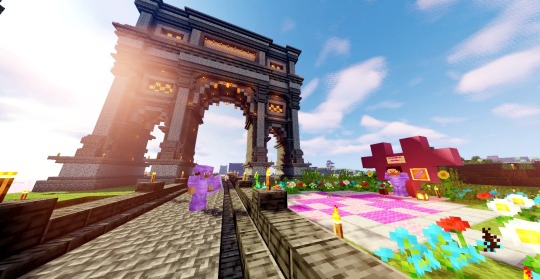
I do know how to build it in Minecraft at least so that's a plus. Based off Hadrian's arch btw
#tbf I never really bothered learning how to draw in general lmao#YES I KNOW THE LINES AREN'T STRAIGHT SOFJISHFISJS#sketch#ink#illustration#art#pen#artists on tumblr#traditional art#my art#minecraft#minecraft build
21 notes
·
View notes
Text


1 note
·
View note